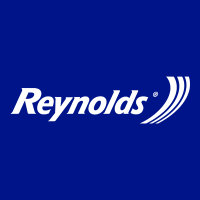
Reynolds Consumer Products Inc
NASDAQ:REYN


| US |

|
Johnson & Johnson
NYSE:JNJ
|
Pharmaceuticals
|
| US |

|
Berkshire Hathaway Inc
NYSE:BRK.A
|
Financial Services
|
| US |

|
Bank of America Corp
NYSE:BAC
|
Banking
|
| US |

|
Mastercard Inc
NYSE:MA
|
Technology
|
| US |

|
UnitedHealth Group Inc
NYSE:UNH
|
Health Care
|
| US |

|
Exxon Mobil Corp
NYSE:XOM
|
Energy
|
| US |

|
Pfizer Inc
NYSE:PFE
|
Pharmaceuticals
|
| US |

|
Palantir Technologies Inc
NYSE:PLTR
|
Technology
|
| US |

|
Nike Inc
NYSE:NKE
|
Textiles, Apparel & Luxury Goods
|
| US |

|
Visa Inc
NYSE:V
|
Technology
|
| CN |

|
Alibaba Group Holding Ltd
NYSE:BABA
|
Retail
|
| US |

|
3M Co
NYSE:MMM
|
Industrial Conglomerates
|
| US |

|
JPMorgan Chase & Co
NYSE:JPM
|
Banking
|
| US |

|
Coca-Cola Co
NYSE:KO
|
Beverages
|
| US |

|
Walmart Inc
NYSE:WMT
|
Retail
|
| US |

|
Verizon Communications Inc
NYSE:VZ
|
Telecommunication
|
Utilize notes to systematically review your investment decisions. By reflecting on past outcomes, you can discern effective strategies and identify those that underperformed. This continuous feedback loop enables you to adapt and refine your approach, optimizing for future success.
Each note serves as a learning point, offering insights into your decision-making processes. Over time, you'll accumulate a personalized database of knowledge, enhancing your ability to make informed decisions quickly and effectively.
With a comprehensive record of your investment history at your fingertips, you can compare current opportunities against past experiences. This not only bolsters your confidence but also ensures that each decision is grounded in a well-documented rationale.
Do you really want to delete this note?
This action cannot be undone.

| 52 Week Range |
25.8207
32.2306
|
| Price Target |
|
We'll email you a reminder when the closing price reaches USD.
Choose the stock you wish to monitor with a price alert.

|
Johnson & Johnson
NYSE:JNJ
|
US |

|
Berkshire Hathaway Inc
NYSE:BRK.A
|
US |

|
Bank of America Corp
NYSE:BAC
|
US |

|
Mastercard Inc
NYSE:MA
|
US |

|
UnitedHealth Group Inc
NYSE:UNH
|
US |

|
Exxon Mobil Corp
NYSE:XOM
|
US |

|
Pfizer Inc
NYSE:PFE
|
US |

|
Palantir Technologies Inc
NYSE:PLTR
|
US |

|
Nike Inc
NYSE:NKE
|
US |

|
Visa Inc
NYSE:V
|
US |

|
Alibaba Group Holding Ltd
NYSE:BABA
|
CN |

|
3M Co
NYSE:MMM
|
US |

|
JPMorgan Chase & Co
NYSE:JPM
|
US |

|
Coca-Cola Co
NYSE:KO
|
US |

|
Walmart Inc
NYSE:WMT
|
US |

|
Verizon Communications Inc
NYSE:VZ
|
US |
This alert will be permanently deleted.
 Reynolds Consumer Products Inc
Reynolds Consumer Products Inc
Reynolds Consumer Products Inc
Reynolds Consumer Products Inc. stands as a household staple, synonymous with practical solutions that make everyday life a bit smoother. Emerging from a legacy that intertwines durability with necessity, Reynolds has skillfully navigated the consumer goods landscape, becoming a quintessential player in the space of kitchen and home convenience. The company operates predominantly through its well-regarded brands, including Reynolds Wrap, Hefty, and its array of foil, bags, and culinary tools. Each product line serves a specific purpose, aimed squarely at enhancing efficiency and effectiveness in everyday tasks. The underlying mantra of simplifying consumer lives guides the innovation that each product undergoes, ensuring they remain relevant and valuable amid ever-shifting consumer preferences.
Revenue streams for Reynolds Consumer Products flow from a diversified product bouquet that aligns with both retail and commercial sectors. By anchoring its value propositions in practical utility, the company secures shelf space in major national and international retail outlets, ensuring consistent visibility and availability. Additionally, its strategic contracts and supply relationships with a gamut of institutional and commercial entities bolster its revenue further, demonstrating its varied approach to sales. This dual-focus strategy empowers Reynolds to maintain a steady financial keel, balancing consumer-friendly pricing with operational efficiency—a balancing act that keeps it competitive despite the often volatile nature of raw material markets and changing economic conditions.

Reynolds Consumer Products Inc. stands as a household staple, synonymous with practical solutions that make everyday life a bit smoother. Emerging from a legacy that intertwines durability with necessity, Reynolds has skillfully navigated the consumer goods landscape, becoming a quintessential player in the space of kitchen and home convenience. The company operates predominantly through its well-regarded brands, including Reynolds Wrap, Hefty, and its array of foil, bags, and culinary tools. Each product line serves a specific purpose, aimed squarely at enhancing efficiency and effectiveness in everyday tasks. The underlying mantra of simplifying consumer lives guides the innovation that each product undergoes, ensuring they remain relevant and valuable amid ever-shifting consumer preferences.
Revenue streams for Reynolds Consumer Products flow from a diversified product bouquet that aligns with both retail and commercial sectors. By anchoring its value propositions in practical utility, the company secures shelf space in major national and international retail outlets, ensuring consistent visibility and availability. Additionally, its strategic contracts and supply relationships with a gamut of institutional and commercial entities bolster its revenue further, demonstrating its varied approach to sales. This dual-focus strategy empowers Reynolds to maintain a steady financial keel, balancing consumer-friendly pricing with operational efficiency—a balancing act that keeps it competitive despite the often volatile nature of raw material markets and changing economic conditions.





























 You don't have any saved screeners yet
You don't have any saved screeners yet
